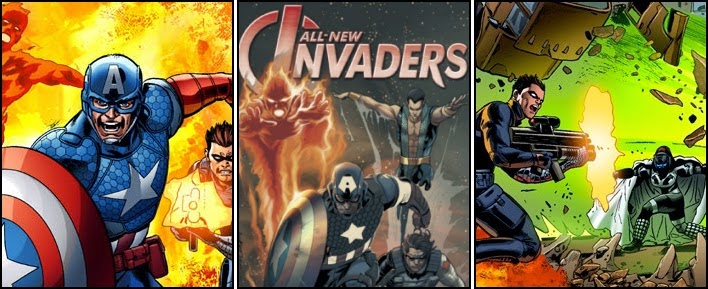 |
| ARKHAM MANOR No. 2, January 2015 |
There’s a seriously claustrophobic treat waiting
in store for any reader who can somehow get past the appallingly bad Shawn
Crystal cover to Issue 2 of “Arkham Manor” and actually take a ‘step inside’
the comic book. Even then writer Gerry Duggan’s tense and nervy thriller isn’t
immediately obvious, as the first few pages of the plot primarily focus’ upon
an inmate discussion group held by Doctor Arkham.
However once the banter-like dialogue
between the mansion’s Administrator, the Scarecrow and Mister Freeze has come to
an end, all attention turns to the machinations of the prisoner, Jack Straw…
also known as The Batman. It is at this point that Duggan’s promise of
depicting the Dark knight wearing an altogether different mask really starts to
materialise and the speed of the plot to “A Home For The Criminally Insane” begins
to move at an increasingly frantic pace.
There’s a killer lose amongst the
killers, and a heavily disguised Bruce Wayne needs to move undetected between
both his ‘fellow’ inmates and the security staff who now patrol his former home.
Ever confident, Batman believes the murderer to be the missing serial-killer Zsasz.
But all his well-laid plans for solving the deaths using stealth and subterfuge
quickly unravel and have to be cast aside as ‘Jack Straw’ witnesses another
attack and has to rush to the scene if he is to save the victim’s life. Thus
follows a headlong dash through Wayne Manor’s corridors as the ‘apparent escapee’
battles both asylum guards as well as the shadowy mutilator himself.
Fortunately,
having presumably shaken off their woes with their terrible sketchy cover illustration,
Shawn Crystal and colorist Dave McCaig appear increasingly on form as the
tension mounts. The former ‘exclusive’ “Marvel Comics” artist’s pencilling is still not the best there is, but the composition of his panels and the viewpoints of
the action he provides the reader with, are simply second to none when it comes
to creating a dark tense and atmospheric world full of sudden dangers and the
promise of a truly horrible death. A hand-held power-drill boring into the
forehead of a tightly bound prisoner being one such example.
 |
| The variant cover art of "ARKHAM MANOR" No. 2 by Chris Brunner & Rico Renzi |
















